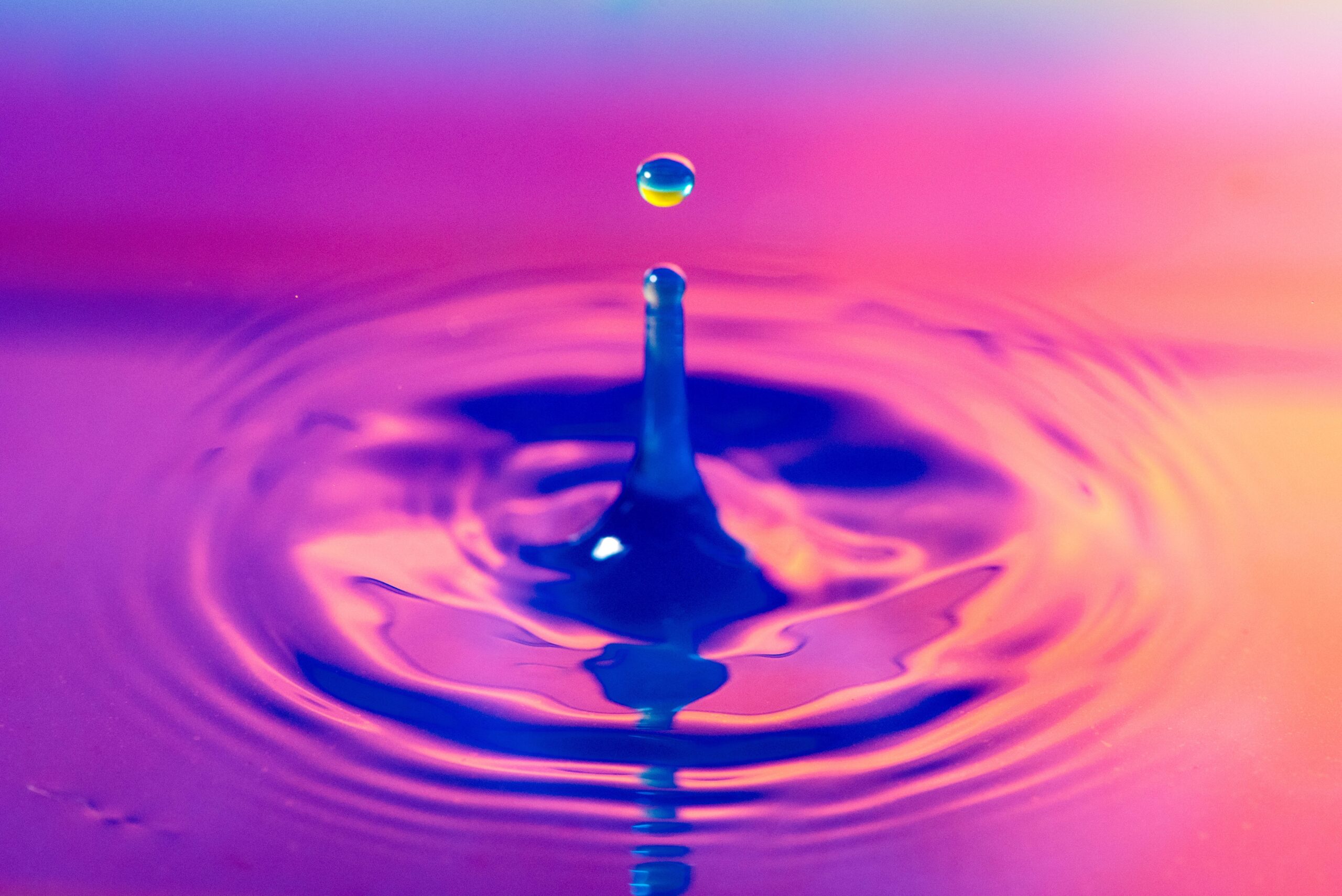If you are dealing with well water that has high chloride levels, you may be wondering about the most effective treatment methods available. It is crucial to address this issue to ensure the safety and quality of your water. In this article, we will explore various treatment methods that have proven to be effective in reducing chloride levels in well water, helping you make an informed decision about the best solution for your particular situation.

Overview of High Chloride Levels in Well Water
High chloride levels in well water can be a cause for concern as they can affect the taste, odor, and safety of the water. Chloride contamination can occur due to various reasons such as natural geological processes, human activities, or a combination of both. It is important to understand the impacts of high chloride levels in well water and the potential health risks they may pose.
Understanding Chloride Contamination
Chloride contamination refers to the presence of an excessive amount of chloride ions in the water, which can come from sources such as road salt, industrial discharges, fertilizers, and natural deposits. These sources can introduce chloride into the groundwater, which then seeps into wells and contaminates the water supply. Chloride contamination is typically more common in areas with heavy industrial activity, urbanization, or proximity to saltwater bodies.
Impacts of High Chloride Levels in Well Water
High chloride levels in well water can have several negative effects. From a health perspective, excessive chloride consumption can cause gastrointestinal irritation and potentially exacerbate conditions like high blood pressure. Additionally, elevated chloride levels can affect the taste and odor of water, making it less pleasant to drink and use for cooking. Furthermore, chloride can corrode plumbing fixtures, appliances, and water treatment equipment, leading to increased maintenance and replacement costs.
Water Testing and Evaluation
To determine if your well water has high chloride levels, it is crucial to conduct regular water testing. Water testing provides valuable information about the quality of your water and helps identify potential contaminants. It is recommended to test for chloride concentration to accurately assess the extent of contamination. By understanding the source of chloride contamination, appropriate treatment methods can be selected.
Importance of Testing
Periodic water testing is essential for ensuring the safety and quality of your well water. Testing for chloride concentration allows you to identify if high chloride levels are present, which is the first step in addressing the issue. Regular testing also helps track any changes in chloride levels over time and ensures that any treatment methods implemented are effectively reducing chloride concentrations.
Chloride Concentration Measurement
Chloride concentration is measured in milligrams per liter (mg/L) or parts per million (ppm). The acceptable chloride levels for drinking water vary depending on the regulatory standards in your region. Generally, chloride concentrations below 250 mg/L are considered acceptable for most uses, including drinking water. However, concentrations exceeding this level may require treatment to reduce chloride levels to a safe and desirable range.
Identifying the Source of Contamination
Once high chloride levels are detected in your well water, it is crucial to identify the source of contamination. Understanding the source helps in implementing effective preventive measures and selecting appropriate treatment methods. Possible sources of chloride contamination can include road salt runoff, nearby industrial activities, agricultural practices, or natural occurrences. Identifying the source allows you to address the root cause and prevent further contamination.

Chloride Removal Methods
Several treatment methods are available for removing high chloride levels from well water. The selection of the appropriate method depends on factors such as the extent of chloride contamination, budget considerations, and specific water quality requirements. Some common chloride removal methods include reverse osmosis, distillation, ion exchange, activated carbon filtration, and chemical precipitation.
Reverse Osmosis
Reverse osmosis is a widely used method for chloride removal. It utilizes a semipermeable membrane that allows water molecules to pass through while blocking larger chloride ions. Reverse osmosis systems typically consist of a pre-filter, membrane module, and post-filter. The water is forced through the membrane, effectively reducing chloride levels. However, it’s important to note that reverse osmosis may also remove beneficial minerals along with chloride.
Distillation
Distillation is another effective method for chloride removal. The process involves heating the water to create steam, which is then condensed back into liquid form, leaving behind the chloride ions. Distillation can remove a wide range of contaminants, including chloride, as it relies on the physical separation of water molecules from impurities. However, distillation can be energy-intensive and may not be suitable for large-scale applications.
Ion Exchange
Ion exchange is a treatment method that involves exchanging chloride ions with less harmful ions, such as sodium or potassium, through a resin bed. The resin bed attracts and captures chloride ions, effectively reducing their concentration in the water. Ion exchange systems can be used on a residential or commercial scale and are particularly effective in treating water with high chloride levels. Regular regeneration of the resin bed is necessary to maintain its effectiveness.
Activated Carbon Filtration
Activated carbon filtration is a common method used to remove various contaminants, including chloride. It works by adsorbing chloride ions onto the activated carbon surface, effectively reducing their concentration in the water. Activated carbon filters come in different forms, such as granular activated carbon (GAC) or carbon block filters. While effective in removing chloride, the filter media may need to be replaced or reactivated periodically to ensure optimal performance.
Chemical Precipitation
Chemical precipitation involves the addition of chemicals to the water to induce the formation of insoluble compounds that can be easily separated from the water. Several chemicals, such as lime or alum, are commonly used for chloride precipitation. The chemicals react with chloride ions, forming compounds that settle at the bottom of a settling tank or can be removed through filtration. Chemical precipitation can be effective in reducing chloride levels, but careful handling and disposal of the chemicals are crucial to prevent environmental contamination.
Reverse Osmosis
Principle of Reverse Osmosis
Reverse osmosis works on the principle of creating a pressure gradient to force water molecules through a semipermeable membrane. The membrane has extremely small pores that allow water molecules to pass through while excluding larger chloride ions and other contaminants. The result is purified water with reduced chloride levels.
Process and Operation
Reverse osmosis systems typically consist of a series of filtration stages. In the pre-filtration stage, sediments, particles, and larger contaminants are removed to protect the membrane. The water then passes through the semipermeable membrane, which functions as the main filtration barrier for chloride removal. Finally, a post-filter further polishes the water to ensure optimal taste and quality.
Advantages and Disadvantages
One of the significant advantages of reverse osmosis is its high efficiency in removing chloride and other contaminants. It can eliminate up to 99% of chloride ions, providing a reliable method for addressing high chloride levels in well water. Reverse osmosis systems are also relatively compact and can be installed under the sink or as a point-of-entry system. However, it is important to note that reverse osmosis may result in a significant amount of water waste during the filtration process, requiring proper disposal management.
Maintenance Considerations
Regular maintenance is essential to ensure the long-term performance of reverse osmosis systems. This includes periodic replacement of pre-filters, membrane cleaning or replacement, and monitoring of water quality parameters. Proper maintenance helps prevent membrane fouling, which can reduce the effectiveness of chloride removal. Additionally, it is important to follow manufacturer guidelines for backwashing and sanitizing the system to maintain its efficiency and prevent bacterial growth.

Distillation
Distillation Process
Distillation is a separation process that utilizes the differences in boiling points of water and contaminants. In the distillation process for chloride removal, the water is heated to generate steam, which is then condensed back into liquid form. The chloride ions, having a higher boiling point than water, are left behind in the distillation vessel, resulting in purified water.
Types of Distillation
There are several types of distillation methods used for chloride removal, including simple distillation, fractional distillation, and vacuum distillation. Simple distillation is the basic form, where water is boiled, and the steam is collected and condensed. Fractional distillation and vacuum distillation are more advanced techniques that allow for greater separation efficiency and reduced energy consumption.
Pros and Cons
One of the main advantages of distillation is its effectiveness in removing chloride and a wide range of other contaminants. Distilled water is considered one of the purest forms of water, with chloride levels significantly reduced. Distillation also eliminates the need for chemical additives, making it a natural and environmentally friendly method. However, distillation can be energy-intensive, and the process is relatively slow compared to other treatment methods.
Maintenance and Cost Factors
Maintaining a distillation system generally involves cleaning the distillation vessel, replacing any worn or damaged parts, and ensuring proper insulation to optimize energy efficiency. The cost of maintenance can vary depending on the complexity and size of the distillation system. Additionally, energy costs associated with distillation should be considered, especially for larger-scale applications. However, the long-term benefits of high-quality, chloride-free water often outweigh the initial investment and ongoing maintenance costs.
Ion Exchange
How Ion Exchange Works
Ion exchange is a chemical process that involves exchanging ions present in the water with other ions present in a resin bed. In the case of chloride removal, the resin bed attracts and captures chloride ions, effectively reducing their concentration in the water. The resin bed is typically comprised of small beads packed into a column, and as water passes through the column, chloride ions are exchanged for less harmful ions.
Different Types of Ion Exchange Systems
There are different types of ion exchange systems used for chloride removal, including packed bed systems and cartridge-based systems. Packed bed systems are commonly used for larger-scale applications and involve a larger vessel housing the resin bed, while cartridge-based systems are more compact and suitable for household use. Both systems rely on the ion exchange principle and require regular regeneration to maintain their effectiveness.
Benefits and Limitations
Ion exchange systems offer several benefits for chloride removal, such as high efficiency in reducing chloride concentrations and relatively low operational costs. They are also capable of removing other ions and contaminants, improving overall water quality. However, it is important to consider the limitations of ion exchange, such as the need for regular regeneration of the resin bed, which involves the use of chemicals. Additionally, the capacity of the resin bed may be limited, requiring periodic replacement or regeneration.
Regeneration Process
Regeneration is a crucial step in maintaining the efficiency of ion exchange systems. During the regeneration process, the resin bed is flushed with a brine solution to remove the captured chloride ions and replace them with fresh ions. The spent brine solution containing high chloride levels is then rinsed and disposed of properly. Following the regeneration process, the ion exchange system is ready to continue removing chloride from the incoming water supply.
Activated Carbon Filtration
Principle of Activated Carbon Filtration
Activated carbon filtration relies on the property of activated carbon to adsorb contaminants, including chloride ions, onto its surface. The activated carbon material has a large surface area and numerous tiny pores that attract and capture chloride ions, effectively reducing their concentration in the water. Activated carbon filters can be used as standalone units or as part of a multi-stage filtration system.
Types of Activated Carbon Filters
There are two main types of activated carbon filters commonly used for chloride removal: granular activated carbon (GAC) and carbon block filters. GAC filters consist of a bed of loose carbon particles through which the water flows, allowing the carbon to adsorb chloride ions. Carbon block filters, on the other hand, have a solid block of activated carbon, which provides more surface area for chloride adsorption. Both types of filters are effective in reducing chloride levels but may have different flow rates and lifespans.
Effectiveness and Limitations
Activated carbon filtration is highly effective in removing chloride ions, as well as other organic and inorganic contaminants that contribute to poor water quality. It improves the taste and odor of water and provides an additional layer of protection against potential health risks. However, it is important to note that activated carbon filters have a finite lifespan, depending on the water quality and usage. Over time, the filter media becomes saturated, requiring replacement or reactivation.
Maintenance Requirements
To ensure optimal performance of activated carbon filters, regular maintenance is necessary. This includes periodic replacement or reactivation of the filter media, as well as cleaning or replacement of any pre-filters to protect the activated carbon bed from clogging. Maintenance schedules can vary depending on the water quality and usage, and it is important to follow the manufacturer’s guidelines. Well-maintained activated carbon filters can provide long-lasting, efficient chloride removal.
Chemical Precipitation
Overview of Chemical Precipitation
Chemical precipitation involves the addition of chemicals to well water to induce the formation of insoluble compounds with chloride ions. These compounds then settle at the bottom of a settling tank or can be removed through filtration, effectively lowering chloride levels in the water. Lime and alum are commonly used chemicals for chloride precipitation due to their ability to react with chloride ions.
Common Chemicals Used
Lime, also known as calcium hydroxide, reacts with chloride ions to form calcium chloride, which is less soluble and precipitates out of the water. Alum, or aluminum sulfate, can also be used to form aluminum chloride, which can then undergo further reactions to form aluminum hydroxide, a solid compound. The choice of chemical depends on various factors, including water pH, alkalinity, and the desired reduction in chloride levels.
Advantages and Disadvantages
Chemical precipitation offers several advantages for chloride removal. It is a relatively simple and cost-effective method that can be implemented on both small and large scales. Chemical precipitation also has the ability to remove other contaminants, such as heavy metals, along with chloride ions. However, it is important to note that chemical precipitation may result in increased salinity due to the formation of calcium or aluminum compounds, which can affect taste and water quality.
Considerations for Safe Handling and Disposal
When using chemicals for precipitation, it is crucial to follow safe handling procedures and guidelines. Protective equipment should be worn, and proper storage and handling procedures should be implemented to minimize the risk of exposure. Additionally, the spent chemicals and precipitates should be properly disposed of in accordance with local regulations to prevent environmental contamination. Consulting with a professional or experienced water treatment specialist is recommended to ensure safe and effective implementation of chemical precipitation.
Combinations of Treatment Methods
In some cases, a combination of treatment methods may be necessary to effectively reduce high chloride levels in well water. Sequential treatment methods involve passing the water through multiple treatment units in a specific order, where each unit addresses a specific contaminant. Simultaneous treatment methods, on the other hand, involve using multiple treatment processes at the same time to achieve the desired reduction in chloride levels.
Sequential Treatment Methods
Sequential treatment methods for chloride removal can involve a combination of processes, such as pre-filtration, reverse osmosis, and activated carbon filtration. The pre-filtration stage removes larger particles and sediments, protecting subsequent treatment units. Reverse osmosis then removes the majority of chloride ions, followed by activated carbon filtration to further polish the water and remove any remaining contaminants. By using sequential treatment methods, each treatment unit can focus on efficiently reducing chloride levels.
Simultaneous Treatment Methods
Simultaneous treatment methods can involve combining different treatment processes to achieve chloride removal. For example, a combination of ion exchange and activated carbon filtration can be used simultaneously to remove chloride ions and other contaminants. The ion exchange process selectively removes chloride ions, while activated carbon filtration helps remove any residual impurities and improves the taste and odor of the water. By using simultaneous treatment methods, multiple contaminants can be targeted simultaneously, resulting in improved water quality.
Effectiveness of Combinations
The effectiveness of the combination treatment methods depends on various factors, including the initial chloride concentration, water quality requirements, and the specific treatment processes used. Combinations of treatment methods can offer enhanced removal efficiency and improved water quality compared to individual treatment methods alone. Consulting with a water treatment professional or conducting pilot studies can help determine the most effective combination of treatment methods based on your specific well water characteristics.
Preventive Measures and Monitoring
While treatment methods are essential for reducing high chloride levels in well water, preventive measures and monitoring play a crucial role in maintaining long-term water quality. Implementing preventive measures not only helps minimize chloride contamination but also reduces the need for extensive treatment. Regular monitoring and testing of well water ensure that any changes in chloride levels are detected early, allowing for prompt intervention.
Well Construction and Maintenance
Proper well construction and maintenance are vital in preventing chloride contamination. Ensuring that the well is properly sealed and located away from potential sources of chloride, such as roads and industrial facilities, can minimize the risk of contamination. Regular inspections and maintenance of the well, including proper sealing of any cracks or leaks, help maintain the integrity of the well and protect against potential chloride intrusion.
Chloride Source Control
Identifying and controlling potential sources of chloride contamination is essential in preventing high chloride levels in well water. This can involve implementing best management practices to minimize the use of road salt, properly managing industrial discharges, and adopting responsible agricultural practices. By addressing the root causes of chloride contamination, the risk of high chloride levels in well water can be significantly reduced.
Regular Water Testing and Monitoring
Regular water testing and monitoring are essential for detecting changes in chloride levels and ensuring ongoing water quality. Periodic testing, preferably conducted by a certified laboratory, can help identify any fluctuations or trends in chloride concentration. This allows for timely implementation of treatment methods or preventive measures to address any potential issues. Additionally, monitoring other water quality parameters, such as pH and alkalinity, can provide valuable insights into the effectiveness of treatment methods and potential impacts on water chemistry.
Proactive Solutions for Groundwater Protection
Proactively protecting groundwater resources is crucial for preventing high chloride levels in well water in the first place. This can involve implementing groundwater protection programs, promoting sustainable land use practices, and raising awareness about the importance of responsible water management. Protecting groundwater from chloride contamination not only ensures a safer and healthier water supply but also contributes to the long-term sustainability of our valuable water resources.
In conclusion, addressing high chloride levels in well water requires a comprehensive understanding of chloride contamination, water testing and evaluation, and selection of suitable treatment methods. Reverse osmosis, distillation, ion exchange, activated carbon filtration, and chemical precipitation are all effective options for chloride removal, each with its own advantages and limitations. By combining treatment methods, monitoring water quality, and implementing preventive measures, high chloride levels can be effectively managed, ensuring safe and desirable well water for various uses.

